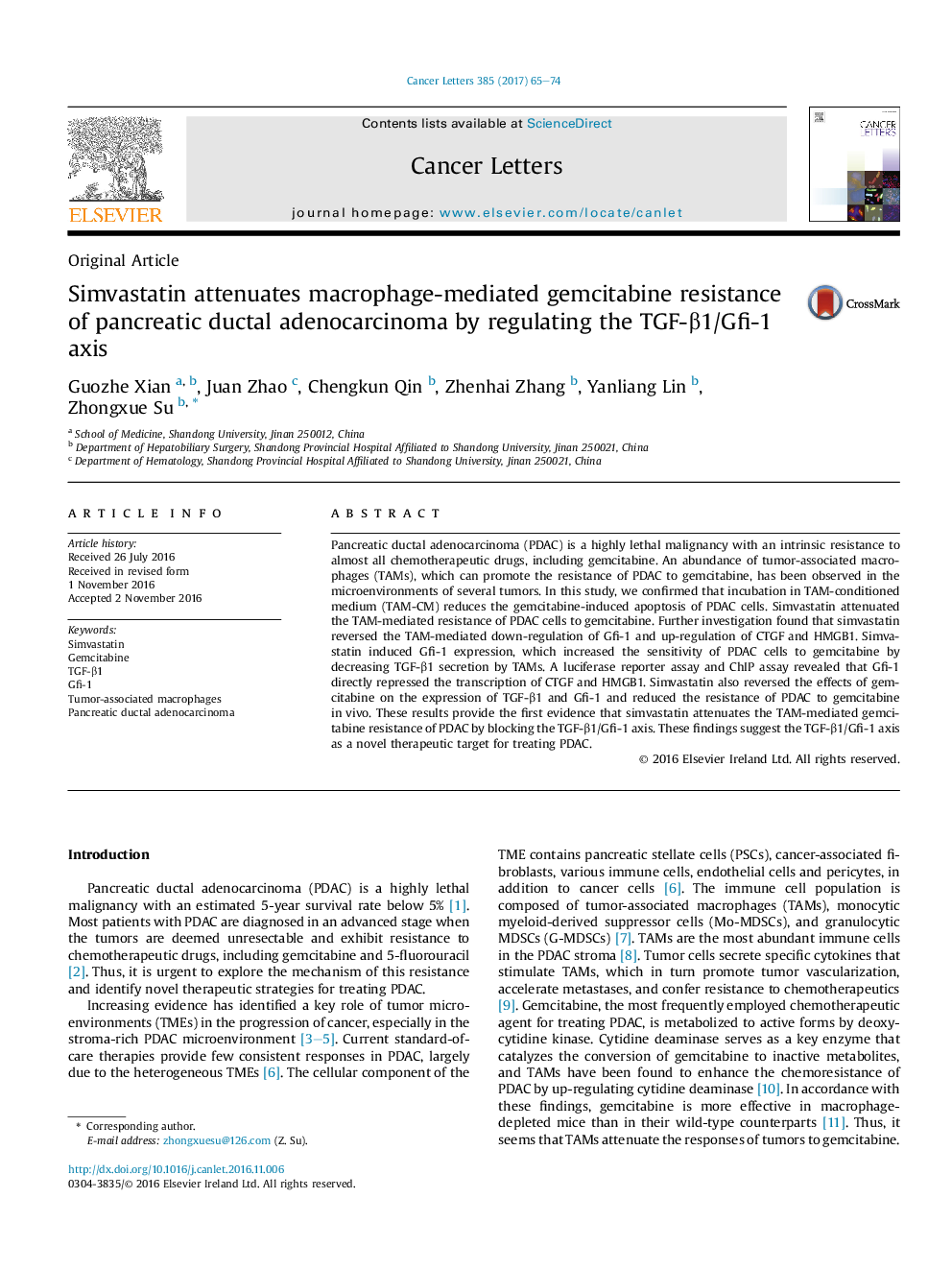| Article ID | Journal | Published Year | Pages | File Type |
|---|---|---|---|---|
| 5525714 | Cancer Letters | 2017 | 10 Pages |
â¢Simvastatin attenuated TAM-mediated gemcitabine resistance of PDAC cells.â¢Exposure of PDAC cells to TAM-CM inhibited Gfi-1 expression.â¢TAM-CM promoted the expression of CTGF and HMGB1 in PDAC cells.â¢Simvastatin reversed the TAM-mediated signal response.â¢Gfi-1 directly repressed the transcription of CTGF and HMGB1.
Pancreatic ductal adenocarcinoma (PDAC) is a highly lethal malignancy with an intrinsic resistance to almost all chemotherapeutic drugs, including gemcitabine. An abundance of tumor-associated macrophages (TAMs), which can promote the resistance of PDAC to gemcitabine, has been observed in the microenvironments of several tumors. In this study, we confirmed that incubation in TAM-conditioned medium (TAM-CM) reduces the gemcitabine-induced apoptosis of PDAC cells. Simvastatin attenuated the TAM-mediated resistance of PDAC cells to gemcitabine. Further investigation found that simvastatin reversed the TAM-mediated down-regulation of Gfi-1 and up-regulation of CTGF and HMGB1. Simvastatin induced Gfi-1 expression, which increased the sensitivity of PDAC cells to gemcitabine by decreasing TGF-β1 secretion by TAMs. A luciferase reporter assay and ChIP assay revealed that Gfi-1 directly repressed the transcription of CTGF and HMGB1. Simvastatin also reversed the effects of gemcitabine on the expression of TGF-β1 and Gfi-1 and reduced the resistance of PDAC to gemcitabine in vivo. These results provide the first evidence that simvastatin attenuates the TAM-mediated gemcitabine resistance of PDAC by blocking the TGF-β1/Gfi-1 axis. These findings suggest the TGF-β1/Gfi-1 axis as a novel therapeutic target for treating PDAC.
